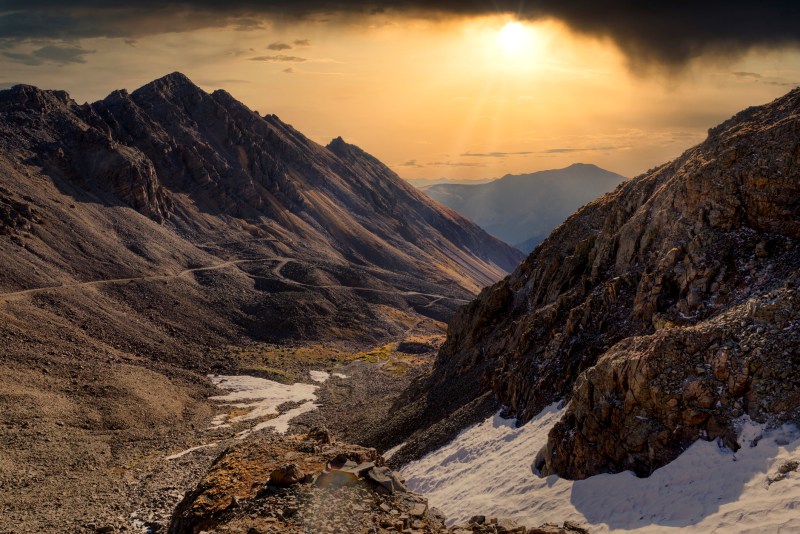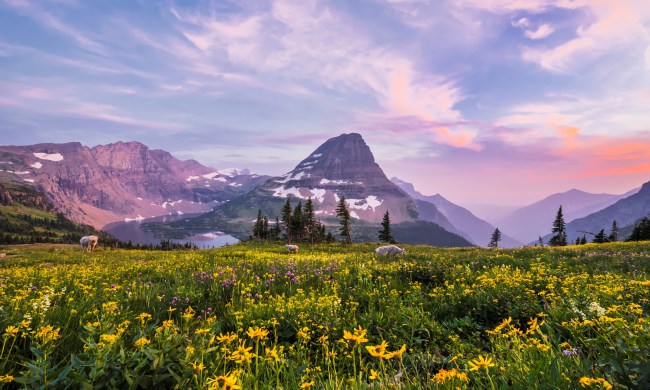
Bikepacking, more commonly known as bicycle touring, is a self-supported trip in which participants spend days, weeks, or even years traveling across regions, countries, and continents via bicycle. One of its greatest perks is the opportunity to explore amazing places.
Whether you’re traveling to a new city or region, there’s no better way to do this than on two wheels. You can cover more miles when pedaling using your bike shoes rather than walking and, unlike driving, you’re still connected to your environment — no carbon footprint, just fresh air.
Here are some of the best long-distance bike trails to test your legs, spend a little time in the saddle, and witness amazing landscapes.
Great Divide Mountain Bike Route (GDMBR)

This off-pavement route stretches from Banff, Alberta in Canada to the U.S.-Mexico border in Antelope Wells, New Mexico. The approximately 2,700-mile path crisscrosses the Continental Divide and is one of the world’s longest off-pavement route. Each year in June, the Tour Divide navigates the trail from north to south in a self-supported race. There are no prizes, only bragging rights. For those not wanting to toe the line in this epic race, the remote trail is open to anyone and includes single-track and forest service roads along with a few stretches of paved roads and paths.
Florida Connector

Best experienced from December to March, the Florida Connector runs from St. Augustine to Fort Lauderdale. The more than 500-mile coast-to-coast-to-coast route includes a combination of sidewalks, bike paths, and bike lanes along shared roads. If you choose to ride the entire trail, it will take you from St. Augustine (on the eastern coast), the oldest city in the U.S., southwest across the state to Ft. Myers Beach (on the western coast) before turning east and finishing in Fort Lauderdale (back to the eastern coast).
Underground Railroad Bicycle Route (UGRR)

The UGRR pays homage to the enslaved freedom seekers looking to escape the oppression of pre-Civil War America. The route begins in Mobile, Alabama, and runs more than 2,000 miles north to Owen Sound, Ontario. Rivers and waterways were important navigational aids for those escaping north and the trail follows these from Alabama to Ohio before continuing north to Ontario. This route passes numerous historical landmarks and is a veritable tour of this period in our nation’s history. In addition to the south-to-north route, there is an optional 150-mile spur running from Pittsburgh to Erie, Pennsylvania.
Great American Rail-Trail

Traversing 12 states and stretching more than 3,700 miles, the Great American Rail-Trail, once completed, will connect Washington, D.C. to Washington State. This multi-use trail will link 125 existing trails across its route, but there are about 90 trail gaps that still need to be developed. While the trail may be years from completion, the foundation has been laid, and the project is already over 53% completed, with large existing sections providing stand-alone rides. The trail will also be readily accessible to almost 20% of the U.S. population that live within 50 miles of the route.
Tips for bikepacking
If you’re new to bikepacking and would like some tips to get started, we’re here to help. First, it’s important you start simple. You don’t need fancy, ultralight gear for your first trip. Use what you already have for camping, borrow from friends, or consider renting gear before you invest too much. Pack light because every extra ounce counts, so only bring the essentials. Focus on clothing that is versatile and have a good sleeping system, a lightweight cooking setup, and a water filtration method.
Pack heavier items in your frame bags and seat bag to balance your bike’s weight. Avoid overloading your handlebars, which can affect steering. This is when your creativity will come in handy — you can use dry bags strapped to your seat post or handlebars for additional storage.
Planning and preparation and more
Start small: Begin with a short overnight loop near your home to test your setup and build confidence.
Practice packing: Pack your gear on your bike well in advance of your trip and take a test ride to see how it handles.
Bike maintenance: Ensure your bike is in tip-top shape before you head out. Get a tune-up if needed, and learn how to fix basic mechanical problems on the road, such as a flat tire.


